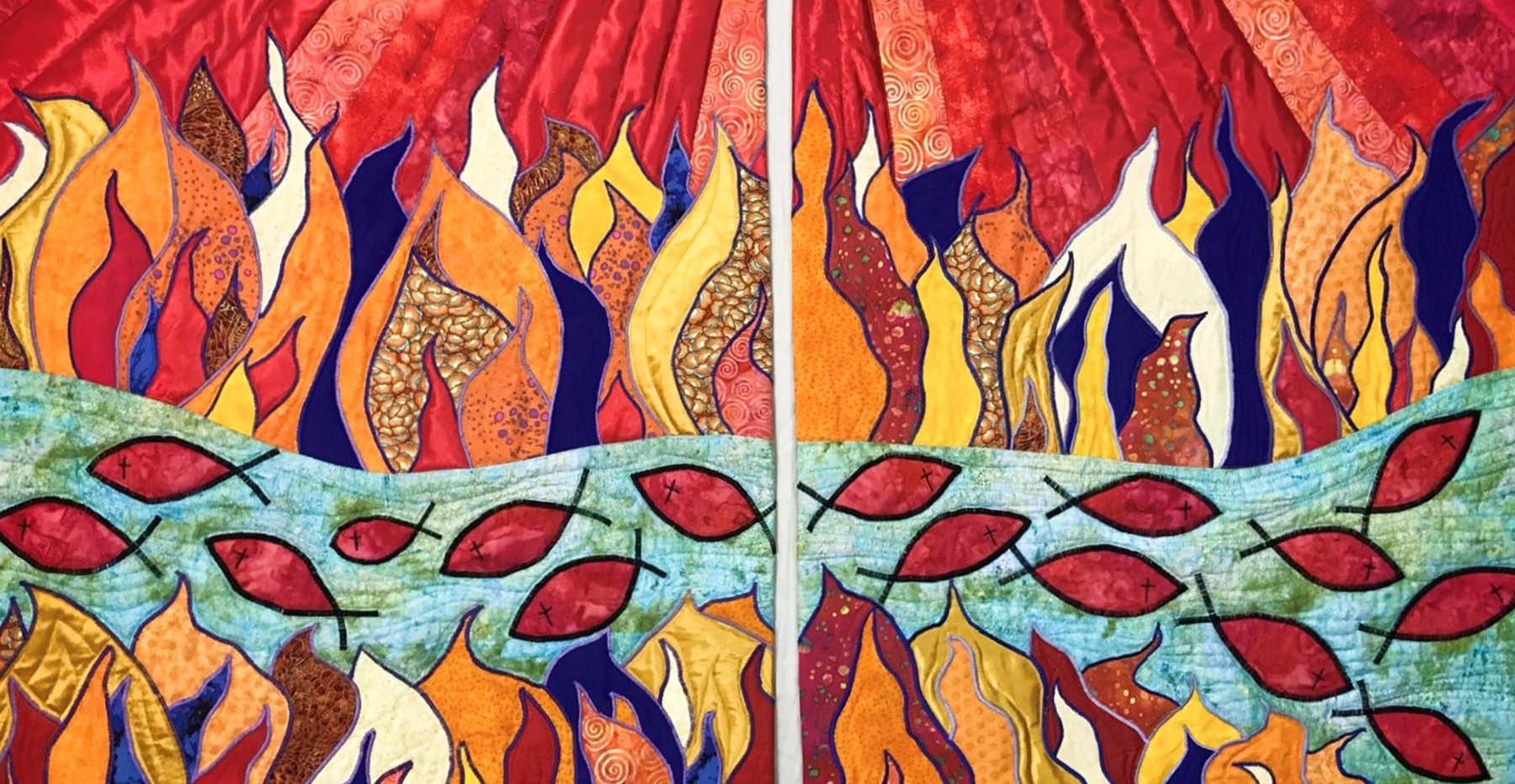About four years ago, Daniel Fournier, the rector of St Luke, Cedar Hill, asked me if I would make a new altar frontal for our church. I am a fabric artist, and he had seen some of my work. After some thought, I agreed, and I worked on one for Ordinary Time. Over the next year, I completed three more frontals. Each work started with a long period of research. I needed to understand what the liturgical season was all about: its meaning, its symbolism and its importance.
As Pentecost is coming up, I thought I would explain my understanding and process for the making of the frontal inspired by this festival.
On the 50th day after the first day of Passover, the Jews celebrate the last of the pilgrimage festivals called Shavuot. The year Jesus died, his disciples gathered for the feast. Imagine being there with them. Jesus had recently been crucified and had risen on the third day. He then moved among the disciples, showing himself to them on various occasions, and on the 40th day after the resurrection, he ascended into heaven. As the disciples feasted, one can imagine them saying, “Well, what now?” After all the dramatic events of the past few weeks, how were they to proceed? They were in desperate need of inspiration. Enter the Holy Spirit.
The story as we know it is that the Holy Spirit is felt as a wind and then appears as tongues of fire which settle on each of the disciples. It came to inspire them. After this visitation at Pentecost, they all knew what they had do — go forth into the world and spread the message of Jesus. It was the beginning of Christianity.
Red — traditionally used for Pentecost — represents the fire associated with the Holy Spirit. Tongues of fire are also related to the gift of tongues. As the Bible tells it, the disciples were immediately able to speak in multifarious languages. Regardless of whether we choose to understand this phenomenon literally or symbolically, the reality was that the disciples would have to find the courage to travel far into the world, and if they were to spread the word, they would need to communicate effectively. The Holy Spirit gave them the ability and confidence to learn the appropriate languages, and more importantly, to speak with inspiration.
When making this altar frontal, I kept the Pentecost story in mind, praying to the Holy Spirit for inspiration. Flames are a traditional idea for Pentecost, but how was I to represent the whole story — the effect of the inspiration? A particular image appeared in my mind — the ancient Christian symbol of the fish, the ichthus — and though I tried to come up with other designs, I kept going back to that idea. Thus I settled on the ichthus to depict the courageous, dangerous and sometimes secret work of those early apostles who travelled far and wide.
Artistically, blue-green, the colour of water, is the complementary of red-orange, the colour of fire. Though water is not a symbol usually associated with Pentecost, I decided to use it because it provided a harmonious colour contrast to the orange-red flames and, where it was placed, served as an area for the eye to rest. Furthermore, blue-green also called to mind the rivers and seas the followers of Jesus travelled upon during the early spread of Christianity.
I made the frontal as a diptych, and I chose the title Inspired to Go Forth. It occurred to me that the inspiration and grace of the Holy Spirit often comes through unexpected sources in our lives. The dedication on the back label reads, “Dedicated to all those teachers, preachers, artists and poets who through their inspired work give us an apprehension of our inner life and glimpses into the realm of God.”
It was my hope that when the congregation first saw the frontal, they would ponder why water and fish were used for Pentecost. It is in the questioning that the message unfolds. For me, it is a reminder that we are all called on to be disciples.






